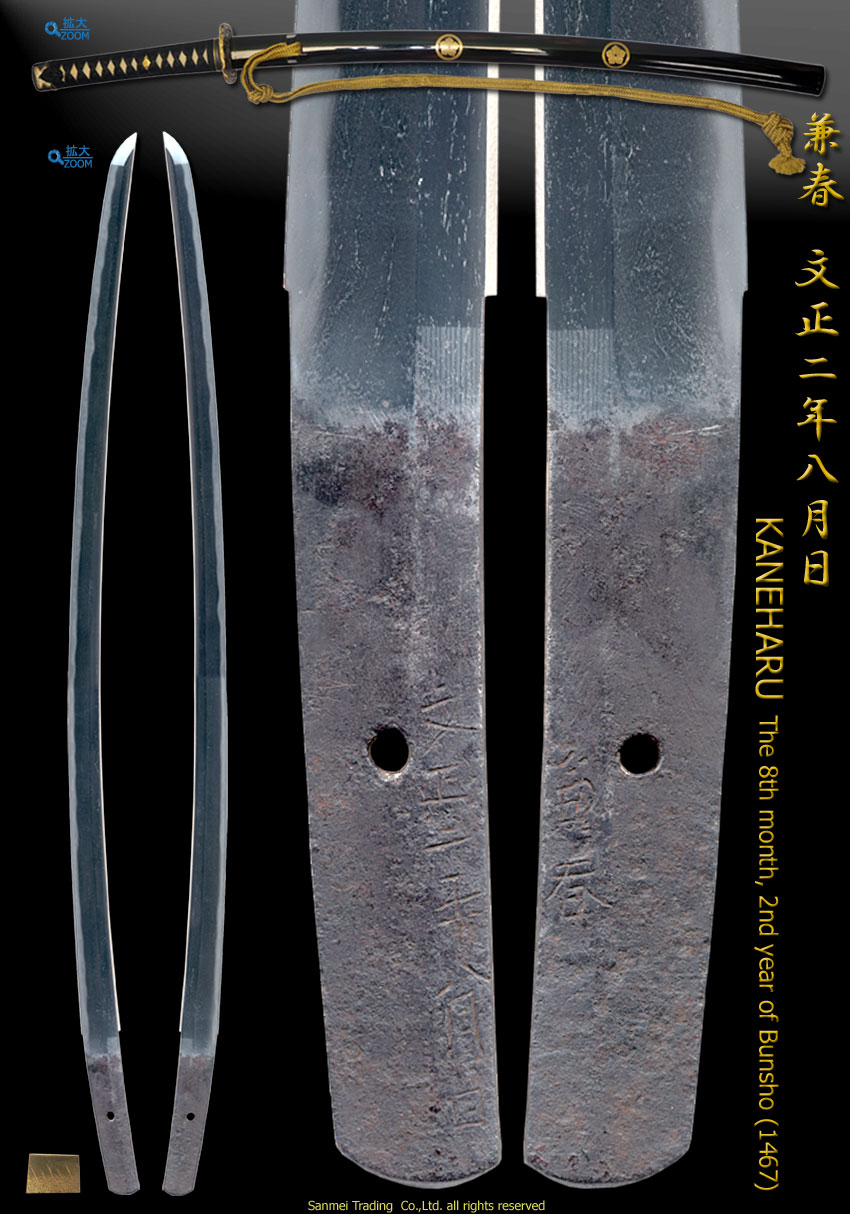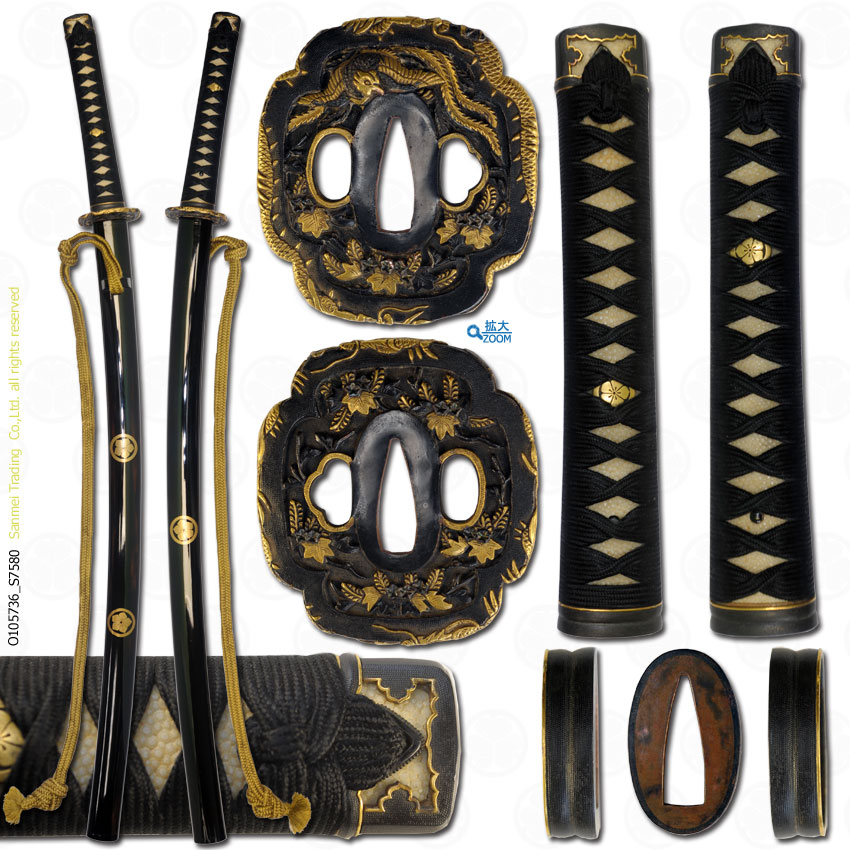with)Black lacquered Bellflower Gold-makie scabbard Uchigatana Koshirae
Length of cutting edge66.3cm Curvature1.9cm Width of base28.6mm Width of Yokote16.6mm Thickness of base7.2mm
Forging pattern (kitae hada) : Kitae hada is conspicuous Itame hada that shows streaming forging marks. The entire hiraji is moistened by fine Ji-nie hard metal granules over the surface of the blade and is beautifully active with whitish Utsuri reflection.
Tempering pattern (hamon) : Hamon is fine ko-nie base, Gunome zigzag, small Gunome. Ashi feet is shining toward cutting edge. Sunagashi blushing streams across the Ashi feet. Upper the blade, two or three Gunomes forms at regular interval.
Temper of tip (boshi) : Boshi is Midarekomi irregular, small circle turns back.
Tang (Nakago) : Nakago is UBU original. Takanoha (V-shape) filemarks. Kurijiri round heel shape. One Mekugi-ana peg hole. The signature in Tachi style is chiselled two character KANE HARU and URA side is the date of year In the 8th month, the 2nd year of Bunsho (1467).
The first generation sword smith KANEHARU, reported from [Dr. Honma Junji/Ishii Masakuni, Nihonto Meikan,Yuzankaku Shuppan, 1975] is to say [belonged to San-ami school in Mino, real name is Shiroubei, a son of KANEYUKI, Chōroku era (1457-1579), date of year 3rd year Choroku (1459), 4th year of Bunmei (1472)] and later generations had been active with the record of works such as Eisho era, Tenbun and Tensho, total seven generations up to Keicho (1596) Shinto period.
Kousei Kotou Meikan, 1830 introduces two examples - the work of 2nd year of Choroku (1458) and one with 3rd year of Kouji (1557).
There are only few works of KANEHARU with the date of year still extant such as this Tachi - 文正二年(1467)、天文二十一(1552)、同二十三年紀(1554)、永禄三(1560)、同六年紀(1563) and慶長元年紀(1596).
The subject tachi holds a high historical value and research material as the oldest existing example of KANEHARU and introduced by Dr. Takuo Suzuki in Token Bijutsu, October, 1989, NBTHK. 文正(Bunsho) era period was only "one year and several days" from 1466-1467 and it is quite rare to come across.
The attached Black lacquered Gold Bellflower Gold-makie scabbard Uchigatana Koshirae consists of:
Fuchi/Kashira : Nanako-ji surface Shakudo copper alloy ground Gold Koberi rim
Menuki : Bellflower(桔梗) motif, Shakudo Yobori, gold Iroe inlay
Tsuba : KIRI and Houou (Paulownia/Phonenix) and dragon motif(桐に鳳凰・龍図). Cross rectangular shape, Shakudo copper alloy ground, Nanako-ji surface takabori, gold iroe inlay. (click HERE for high resolution image of Tsuba)
Hilt : White rayskin, black lozenge cord wrap
Scabbard : Black RO-IRO style Japanese lacquered, Bellflower(桔梗) in circle crest Gold-Makie work.
The blade was surely exclusively made for powerful clan and surprisingly remains an excellent condition in 545 years and has been treasured generations and was added the high quality koshirae fitting in the end of Edo period.
Gold plated copper ground habaki collar, preserved in a Shira Saya plian wood mounting.


